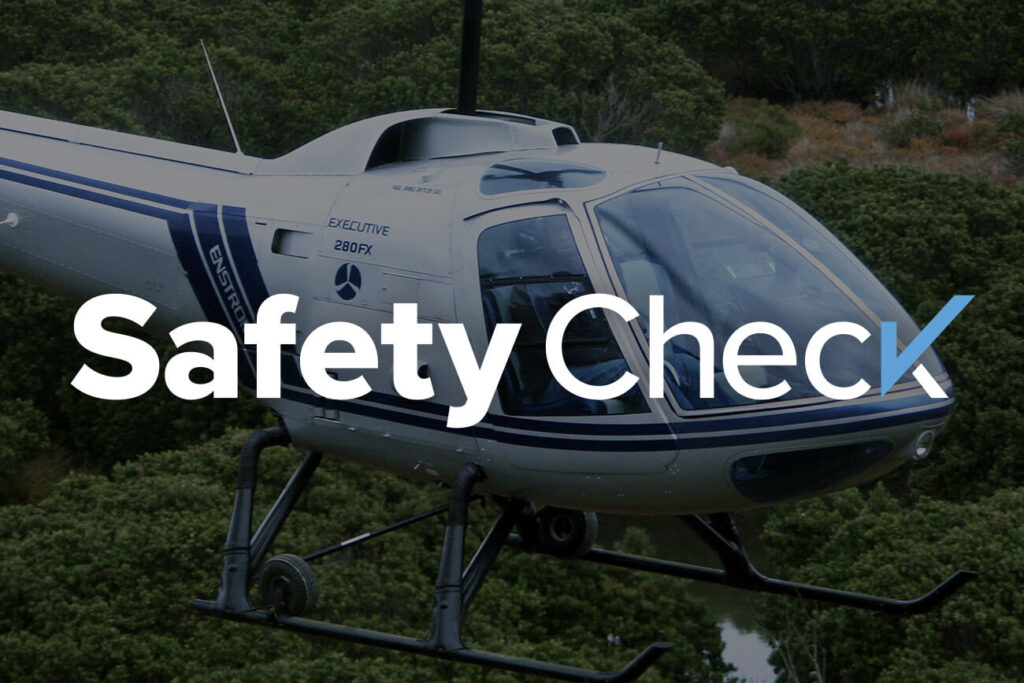Safety Check: Second-Level Safety Drivers

I used to ask my university students if they believed it was possible to make flying 100% safe. They had plenty of ideas, but the inevitable conclusion was always this: the only way to remove all risk was not to fly at all. Flight is all about risk management.
So, if safety isn’t about eliminating all risk, then what is it? At the end of class, I would ask each student to submit a short paragraph explaining “what does safety mean?” It sounded like a simple enough question, but it caused a lot of student consternation.
The point of the assignment was for the students to realize there isn’t a single, concise definition of safety. It’s contextual. What one pilot considers safe, another pilot might not. What works for one type of operation might be insufficient for another. Even so, as an operator, it’s still my responsibility to develop the best protocols and make my operation the safest it can be.
As I detailed in last month’s Safety Check, when selecting an aircraft, I prefer to take a holistic approach in evaluating the OEM’s dedication to safety. There are, of course, primary safety factors generally accepted by the industry – the type of rotor system, rotor inertia, tail rotor design, energy absorbing seats, crash resistant fuel tanks, landing gear design, and transmission drive systems to name a few. But what about all the other factors that might impact overall safety but aren’t directly related to the aircraft design or regulatory requirements?
I consider these to be “second-level safety drivers.” Here are a few examples:
Air conditioning availability. In the warmer months, some pilots prefer flying doors-off to maintain a comfortable cabin temperature. I am not one of them. Keeping the doors on reduces the risk of something flying out from the cabin and into the tail rotor. When I’m out providing helicopter flights at summer festivals, I prefer not to have to choose between increasing flight risk or baking in the sweltering July sun. Just give me that sweet A/C.
Advanced avionics availability. I might have grown up with steam gauges, and I’m quite confident in my ability to fly and teach in an analog flight deck. But why on earth would I want to? Modern avionics offers more capability, have few failure modes, and weigh less than analog instruments. Plus, the additional information helps amplify the pilot’s situational awareness, which is always a win!
OEM availability/support. Is the OEM accessible and quick to respond? Do they listen to operator input? Do they have maintenance and pilot training available? Do they have nearby service centers with specialized knowledge of the aircraft? Even if you owned the safest aircraft in the world, you won’t be flying it for long if it’s impossible to maintain.
Insurance programs. Insurers want to know you’re prioritizing safety, and they will often implement training and currency requirements with a standardized instructor. What better incentive to fly safe than saving cash on insurance premiums? The Enstrom Owners Insurance Program through Aviation Specialty Insurance is a great example of this.
There are so many more second-level safety drivers I could list but don’t have room for, so I will close this Safety Check by encouraging everyone, whether you’re a private pilot or a large fleet operator, to consider which of these drivers – both tangible and intangible – might be impacting your operation. If flight is all about risk management, then make sure you’re aware all the factors involved!
Jason Cutter, Ph.D is the owner of Venture Helicopters at Frankfort Municipal Airport. He is a contract pilot and former professor at a major research university, where he taught in the aviation school.
About Enstrom Helicopter
From Rudy Enstrom’s early designs in 1943 to initial testing in a Michigan Quarry in 1957 to aircraft operating on six continents, Enstrom Helicopter Corporation has maintained a reputation for safety, value and performance. Based in Menominee, Michigan and proudly made in the United States, Enstrom has a rich history for design innovation. The goal is to provide helicopters to the customer’s exact specification and deliver support and maintenance worldwide.